Tao Qin
Microsoft Research Asia
RetroGraph: Retrosynthetic Planning with Graph Search
Jun 23, 2022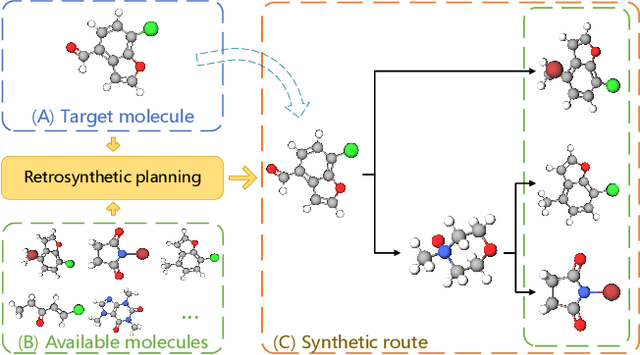
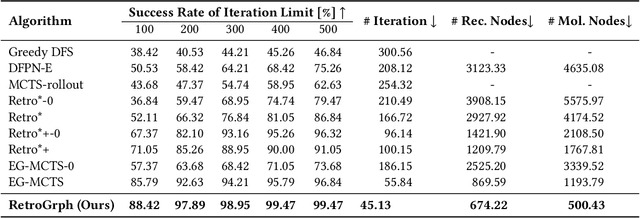
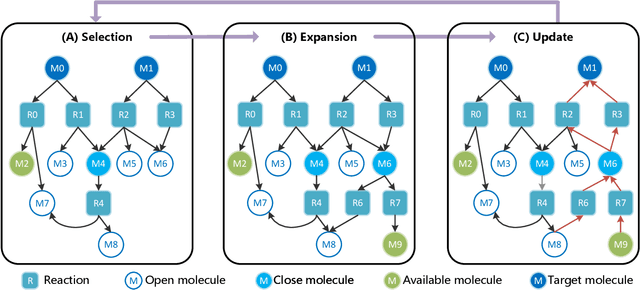

Abstract:Retrosynthetic planning, which aims to find a reaction pathway to synthesize a target molecule, plays an important role in chemistry and drug discovery. This task is usually modeled as a search problem. Recently, data-driven methods have attracted many research interests and shown promising results for retrosynthetic planning. We observe that the same intermediate molecules are visited many times in the searching process, and they are usually independently treated in previous tree-based methods (e.g., AND-OR tree search, Monte Carlo tree search). Such redundancies make the search process inefficient. We propose a graph-based search policy that eliminates the redundant explorations of any intermediate molecules. As searching over a graph is more complicated than over a tree, we further adopt a graph neural network to guide the search over graphs. Meanwhile, our method can search a batch of targets together in the graph and remove the inter-target duplication in the tree-based search methods. Experimental results on two datasets demonstrate the effectiveness of our method. Especially on the widely used USPTO benchmark, we improve the search success rate to 99.47%, advancing previous state-of-the-art performance for 2.6 points.
SMT-DTA: Improving Drug-Target Affinity Prediction with Semi-supervised Multi-task Training
Jun 22, 2022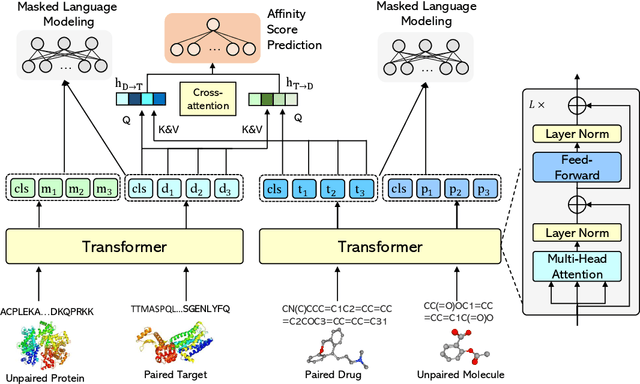
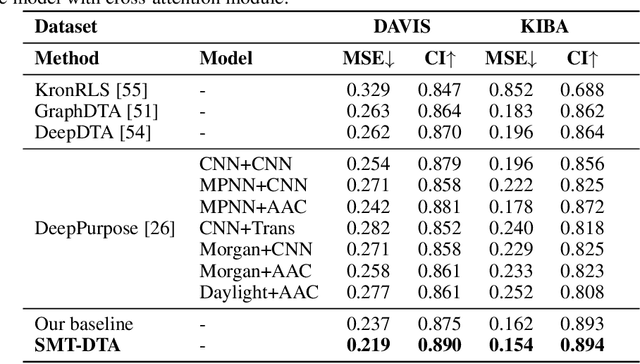
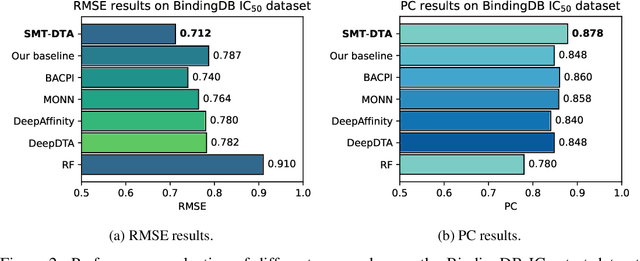

Abstract:Drug-Target Affinity (DTA) prediction is an essential task for drug discovery and pharmaceutical research. Accurate predictions of DTA can greatly benefit the design of new drug. As wet experiments are costly and time consuming, the supervised data for DTA prediction is extremely limited. This seriously hinders the application of deep learning based methods, which require a large scale of supervised data. To address this challenge and improve the DTA prediction accuracy, we propose a framework with several simple yet effective strategies in this work: (1) a multi-task training strategy, which takes the DTA prediction and the masked language modeling (MLM) task on the paired drug-target dataset; (2) a semi-supervised training method to empower the drug and target representation learning by leveraging large-scale unpaired molecules and proteins in training, which differs from previous pre-training and fine-tuning methods that only utilize molecules or proteins in pre-training; and (3) a cross-attention module to enhance the interaction between drug and target representation. Extensive experiments are conducted on three real-world benchmark datasets: BindingDB, DAVIS and KIBA. The results show that our framework significantly outperforms existing methods and achieves state-of-the-art performances, e.g., $0.712$ RMSE on BindingDB IC$_{50}$ measurement with more than $5\%$ improvement than previous best work. In addition, case studies on specific drug-target binding activities, drug feature visualizations, and real-world applications demonstrate the great potential of our work. The code and data are released at https://github.com/QizhiPei/SMT-DTA
Transcormer: Transformer for Sentence Scoring with Sliding Language Modeling
Jun 05, 2022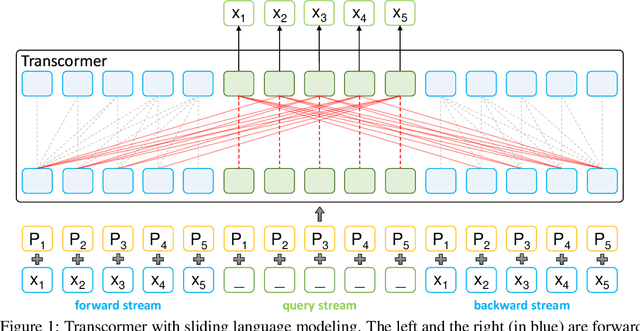

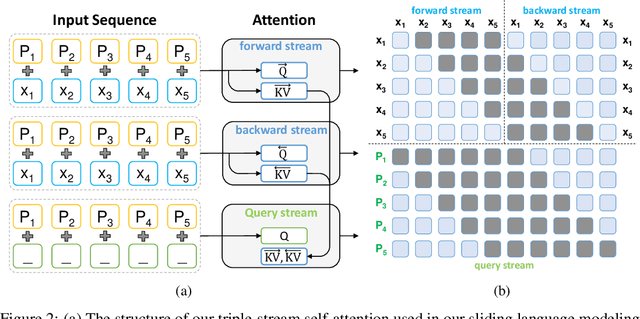

Abstract:Sentence scoring aims at measuring the likelihood score of a sentence and is widely used in many natural language processing scenarios, like reranking, which is to select the best sentence from multiple candidates. Previous works on sentence scoring mainly adopted either causal language modeling (CLM) like GPT or masked language modeling (MLM) like BERT, which have some limitations: 1) CLM only utilizes unidirectional information for the probability estimation of a sentence without considering bidirectional context, which affects the scoring quality; 2) MLM can only estimate the probability of partial tokens at a time and thus requires multiple forward passes to estimate the probability of the whole sentence, which incurs large computation and time cost. In this paper, we propose \textit{Transcormer} -- a Transformer model with a novel \textit{sliding language modeling} (SLM) for sentence scoring. Specifically, our SLM adopts a triple-stream self-attention mechanism to estimate the probability of all tokens in a sentence with bidirectional context and only requires a single forward pass. SLM can avoid the limitations of CLM (only unidirectional context) and MLM (multiple forward passes) and inherit their advantages, and thus achieve high effectiveness and efficiency in scoring. Experimental results on multiple tasks demonstrate that our method achieves better performance than other language modelings.
BinauralGrad: A Two-Stage Conditional Diffusion Probabilistic Model for Binaural Audio Synthesis
May 30, 2022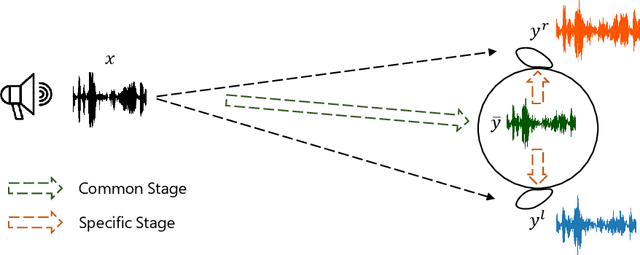

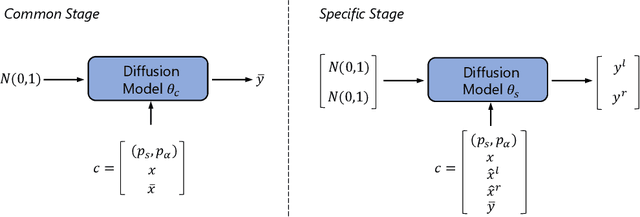

Abstract:Binaural audio plays a significant role in constructing immersive augmented and virtual realities. As it is expensive to record binaural audio from the real world, synthesizing them from mono audio has attracted increasing attention. This synthesis process involves not only the basic physical warping of the mono audio, but also room reverberations and head/ear related filtrations, which, however, are difficult to accurately simulate in traditional digital signal processing. In this paper, we formulate the synthesis process from a different perspective by decomposing the binaural audio into a common part that shared by the left and right channels as well as a specific part that differs in each channel. Accordingly, we propose BinauralGrad, a novel two-stage framework equipped with diffusion models to synthesize them respectively. Specifically, in the first stage, the common information of the binaural audio is generated with a single-channel diffusion model conditioned on the mono audio, based on which the binaural audio is generated by a two-channel diffusion model in the second stage. Combining this novel perspective of two-stage synthesis with advanced generative models (i.e., the diffusion models),the proposed BinauralGrad is able to generate accurate and high-fidelity binaural audio samples. Experiment results show that on a benchmark dataset, BinauralGrad outperforms the existing baselines by a large margin in terms of both object and subject evaluation metrics (Wave L2: 0.128 vs. 0.157, MOS: 3.80 vs. 3.61). The generated audio samples are available online.
Tiered Reinforcement Learning: Pessimism in the Face of Uncertainty and Constant Regret
May 25, 2022

Abstract:We propose a new learning framework that captures the tiered structure of many real-world user-interaction applications, where the users can be divided into two groups based on their different tolerance on exploration risks and should be treated separately. In this setting, we simultaneously maintain two policies $\pi^{\text{O}}$ and $\pi^{\text{E}}$: $\pi^{\text{O}}$ ("O" for "online") interacts with more risk-tolerant users from the first tier and minimizes regret by balancing exploration and exploitation as usual, while $\pi^{\text{E}}$ ("E" for "exploit") exclusively focuses on exploitation for risk-averse users from the second tier utilizing the data collected so far. An important question is whether such a separation yields advantages over the standard online setting (i.e., $\pi^{\text{E}}=\pi^{\text{O}}$) for the risk-averse users. We individually consider the gap-independent vs.~gap-dependent settings. For the former, we prove that the separation is indeed not beneficial from a minimax perspective. For the latter, we show that if choosing Pessimistic Value Iteration as the exploitation algorithm to produce $\pi^{\text{E}}$, we can achieve a constant regret for risk-averse users independent of the number of episodes $K$, which is in sharp contrast to the $\Omega(\log K)$ regret for any online RL algorithms in the same setting, while the regret of $\pi^{\text{O}}$ (almost) maintains its online regret optimality and does not need to compromise for the success of $\pi^{\text{E}}$.
NaturalSpeech: End-to-End Text to Speech Synthesis with Human-Level Quality
May 10, 2022
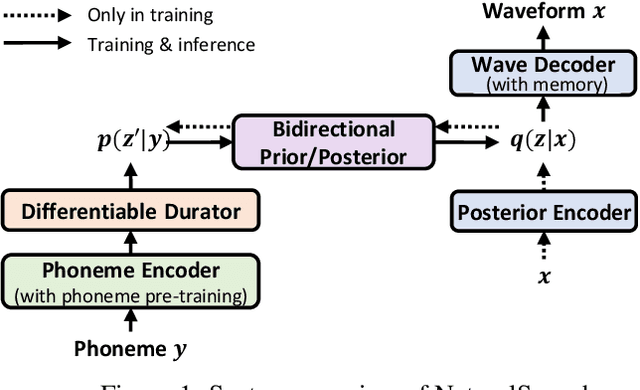
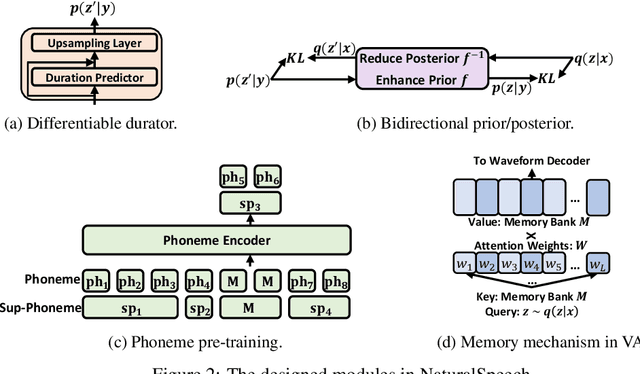

Abstract:Text to speech (TTS) has made rapid progress in both academia and industry in recent years. Some questions naturally arise that whether a TTS system can achieve human-level quality, how to define/judge that quality and how to achieve it. In this paper, we answer these questions by first defining the human-level quality based on the statistical significance of subjective measure and introducing appropriate guidelines to judge it, and then developing a TTS system called NaturalSpeech that achieves human-level quality on a benchmark dataset. Specifically, we leverage a variational autoencoder (VAE) for end-to-end text to waveform generation, with several key modules to enhance the capacity of the prior from text and reduce the complexity of the posterior from speech, including phoneme pre-training, differentiable duration modeling, bidirectional prior/posterior modeling, and a memory mechanism in VAE. Experiment evaluations on popular LJSpeech dataset show that our proposed NaturalSpeech achieves -0.01 CMOS (comparative mean opinion score) to human recordings at the sentence level, with Wilcoxon signed rank test at p-level p >> 0.05, which demonstrates no statistically significant difference from human recordings for the first time on this dataset.
A Survey on Non-Autoregressive Generation for Neural Machine Translation and Beyond
Apr 20, 2022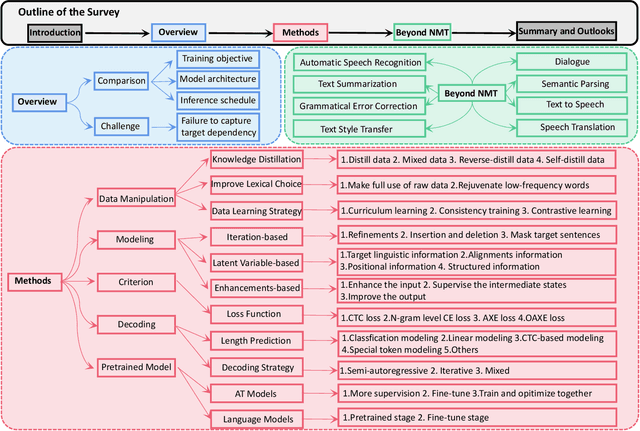
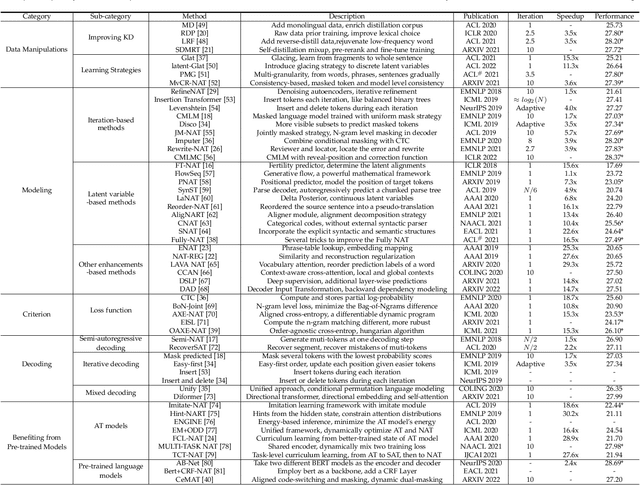
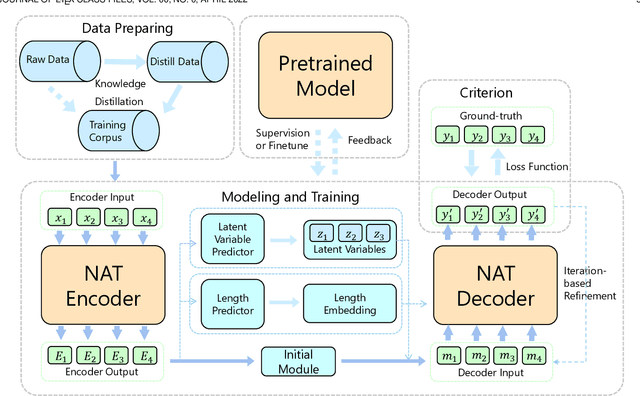
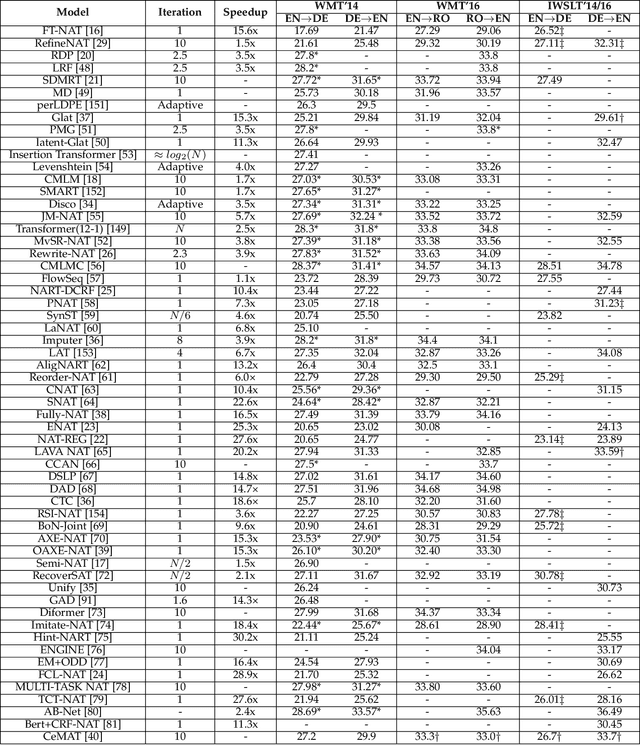
Abstract:Non-autoregressive (NAR) generation, which is first proposed in neural machine translation (NMT) to speed up inference, has attracted much attention in both machine learning and natural language processing communities. While NAR generation can significantly accelerate inference speed for machine translation, the speedup comes at the cost of sacrificed translation accuracy compared to its counterpart, auto-regressive (AR) generation. In recent years, many new models and algorithms have been designed/proposed to bridge the accuracy gap between NAR generation and AR generation. In this paper, we conduct a systematic survey with comparisons and discussions of various non-autoregressive translation (NAT) models from different aspects. Specifically, we categorize the efforts of NAT into several groups, including data manipulation, modeling methods, training criterion, decoding algorithms, and the benefit from pre-trained models. Furthermore, we briefly review other applications of NAR models beyond machine translation, such as dialogue generation, text summarization, grammar error correction, semantic parsing, speech synthesis, and automatic speech recognition. In addition, we also discuss potential directions for future exploration, including releasing the dependency of KD, dynamic length prediction, pre-training for NAR, and wider applications, etc. We hope this survey can help researchers capture the latest progress in NAR generation, inspire the design of advanced NAR models and algorithms, and enable industry practitioners to choose appropriate solutions for their applications. The web page of this survey is at \url{https://github.com/LitterBrother-Xiao/Overview-of-Non-autoregressive-Applications}.
AdaSpeech 4: Adaptive Text to Speech in Zero-Shot Scenarios
Apr 01, 2022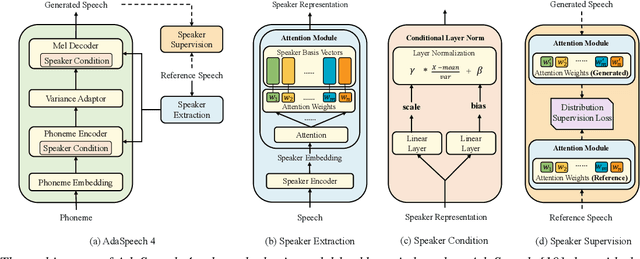

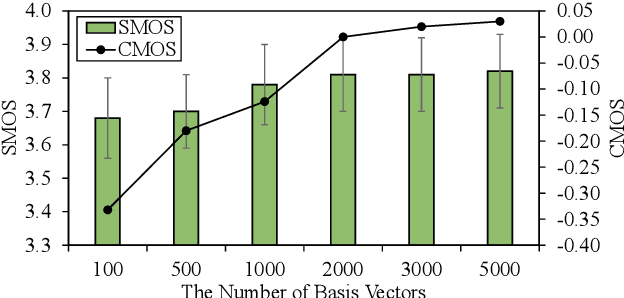
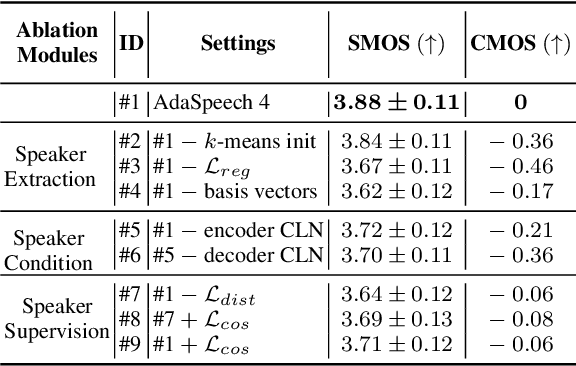
Abstract:Adaptive text to speech (TTS) can synthesize new voices in zero-shot scenarios efficiently, by using a well-trained source TTS model without adapting it on the speech data of new speakers. Considering seen and unseen speakers have diverse characteristics, zero-shot adaptive TTS requires strong generalization ability on speaker characteristics, which brings modeling challenges. In this paper, we develop AdaSpeech 4, a zero-shot adaptive TTS system for high-quality speech synthesis. We model the speaker characteristics systematically to improve the generalization on new speakers. Generally, the modeling of speaker characteristics can be categorized into three steps: extracting speaker representation, taking this speaker representation as condition, and synthesizing speech/mel-spectrogram given this speaker representation. Accordingly, we improve the modeling in three steps: 1) To extract speaker representation with better generalization, we factorize the speaker characteristics into basis vectors and extract speaker representation by weighted combining of these basis vectors through attention. 2) We leverage conditional layer normalization to integrate the extracted speaker representation to TTS model. 3) We propose a novel supervision loss based on the distribution of basis vectors to maintain the corresponding speaker characteristics in generated mel-spectrograms. Without any fine-tuning, AdaSpeech 4 achieves better voice quality and similarity than baselines in multiple datasets.
Mixed-Phoneme BERT: Improving BERT with Mixed Phoneme and Sup-Phoneme Representations for Text to Speech
Mar 31, 2022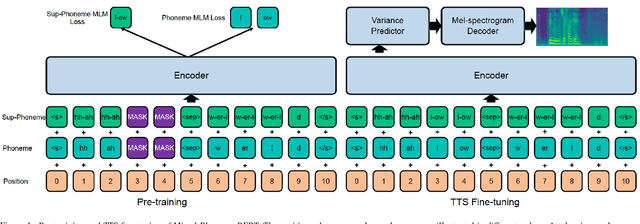
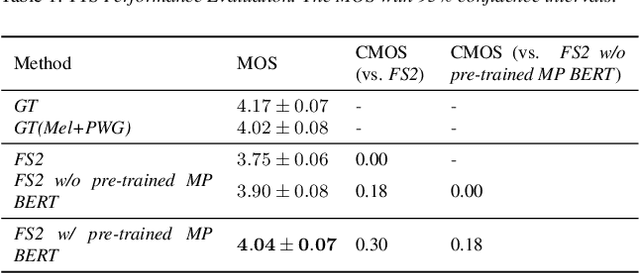


Abstract:Recently, leveraging BERT pre-training to improve the phoneme encoder in text to speech (TTS) has drawn increasing attention. However, the works apply pre-training with character-based units to enhance the TTS phoneme encoder, which is inconsistent with the TTS fine-tuning that takes phonemes as input. Pre-training only with phonemes as input can alleviate the input mismatch but lack the ability to model rich representations and semantic information due to limited phoneme vocabulary. In this paper, we propose MixedPhoneme BERT, a novel variant of the BERT model that uses mixed phoneme and sup-phoneme representations to enhance the learning capability. Specifically, we merge the adjacent phonemes into sup-phonemes and combine the phoneme sequence and the merged sup-phoneme sequence as the model input, which can enhance the model capacity to learn rich contextual representations. Experiment results demonstrate that our proposed Mixed-Phoneme BERT significantly improves the TTS performance with 0.30 CMOS gain compared with the FastSpeech 2 baseline. The Mixed-Phoneme BERT achieves 3x inference speedup and similar voice quality to the previous TTS pre-trained model PnG BERT
Revisiting Over-Smoothness in Text to Speech
Feb 26, 2022
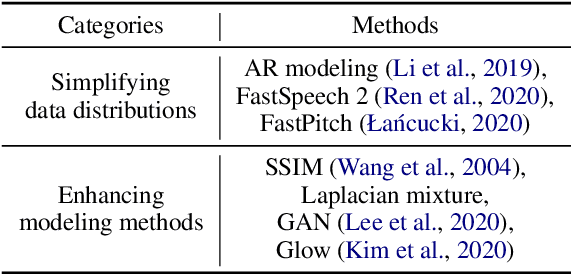

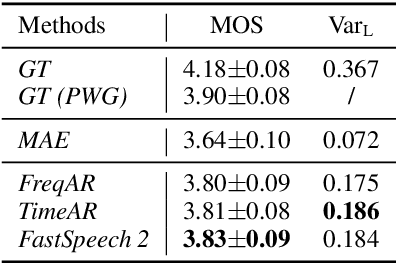
Abstract:Non-autoregressive text to speech (NAR-TTS) models have attracted much attention from both academia and industry due to their fast generation speed. One limitation of NAR-TTS models is that they ignore the correlation in time and frequency domains while generating speech mel-spectrograms, and thus cause blurry and over-smoothed results. In this work, we revisit this over-smoothing problem from a novel perspective: the degree of over-smoothness is determined by the gap between the complexity of data distributions and the capability of modeling methods. Both simplifying data distributions and improving modeling methods can alleviate the problem. Accordingly, we first study methods reducing the complexity of data distributions. Then we conduct a comprehensive study on NAR-TTS models that use some advanced modeling methods. Based on these studies, we find that 1) methods that provide additional condition inputs reduce the complexity of data distributions to model, thus alleviating the over-smoothing problem and achieving better voice quality. 2) Among advanced modeling methods, Laplacian mixture loss performs well at modeling multimodal distributions and enjoys its simplicity, while GAN and Glow achieve the best voice quality while suffering from increased training or model complexity. 3) The two categories of methods can be combined to further alleviate the over-smoothness and improve the voice quality. 4) Our experiments on the multi-speaker dataset lead to similar conclusions as above and providing more variance information can reduce the difficulty of modeling the target data distribution and alleviate the requirements for model capacity.
 Add to Chrome
Add to Chrome Add to Firefox
Add to Firefox Add to Edge
Add to Edge